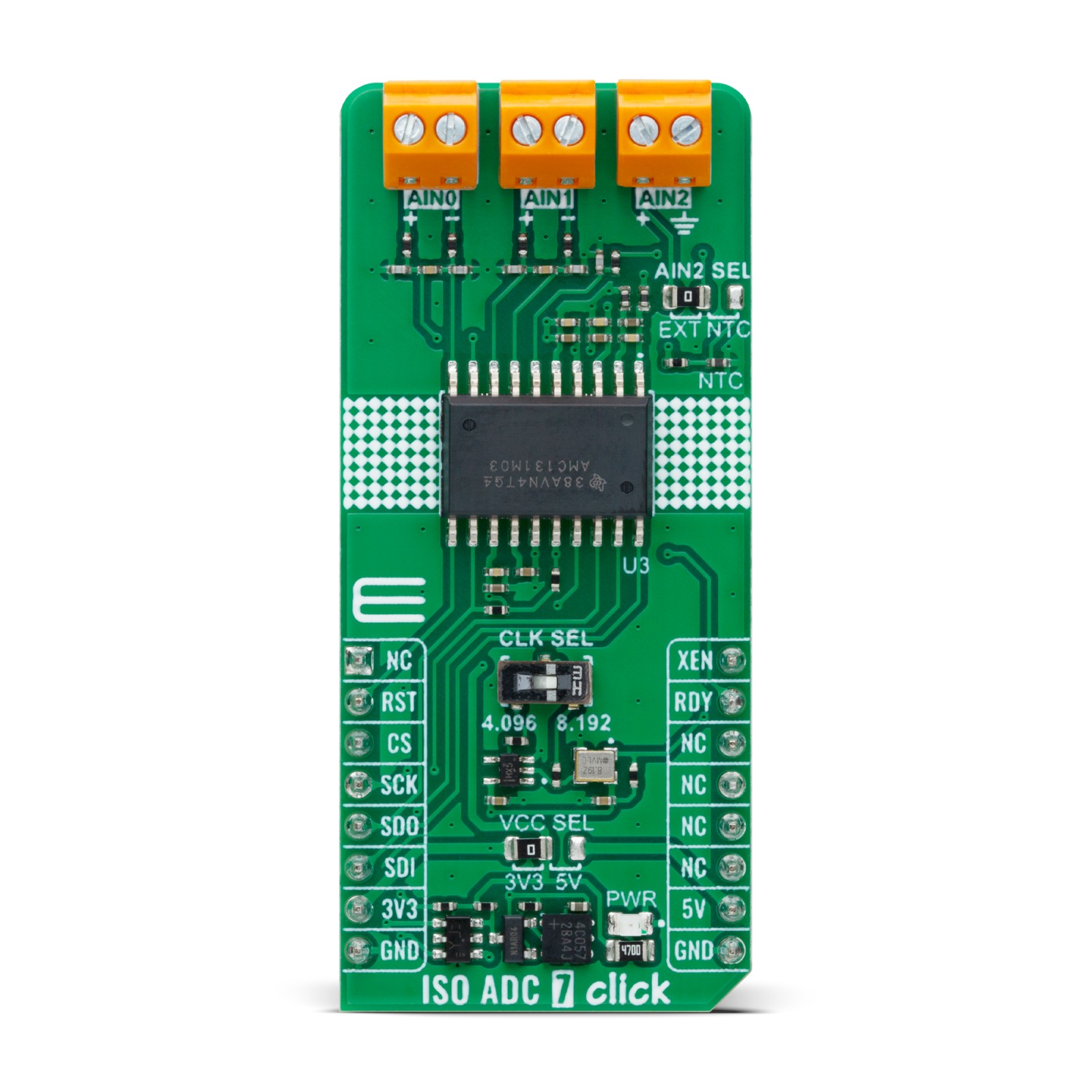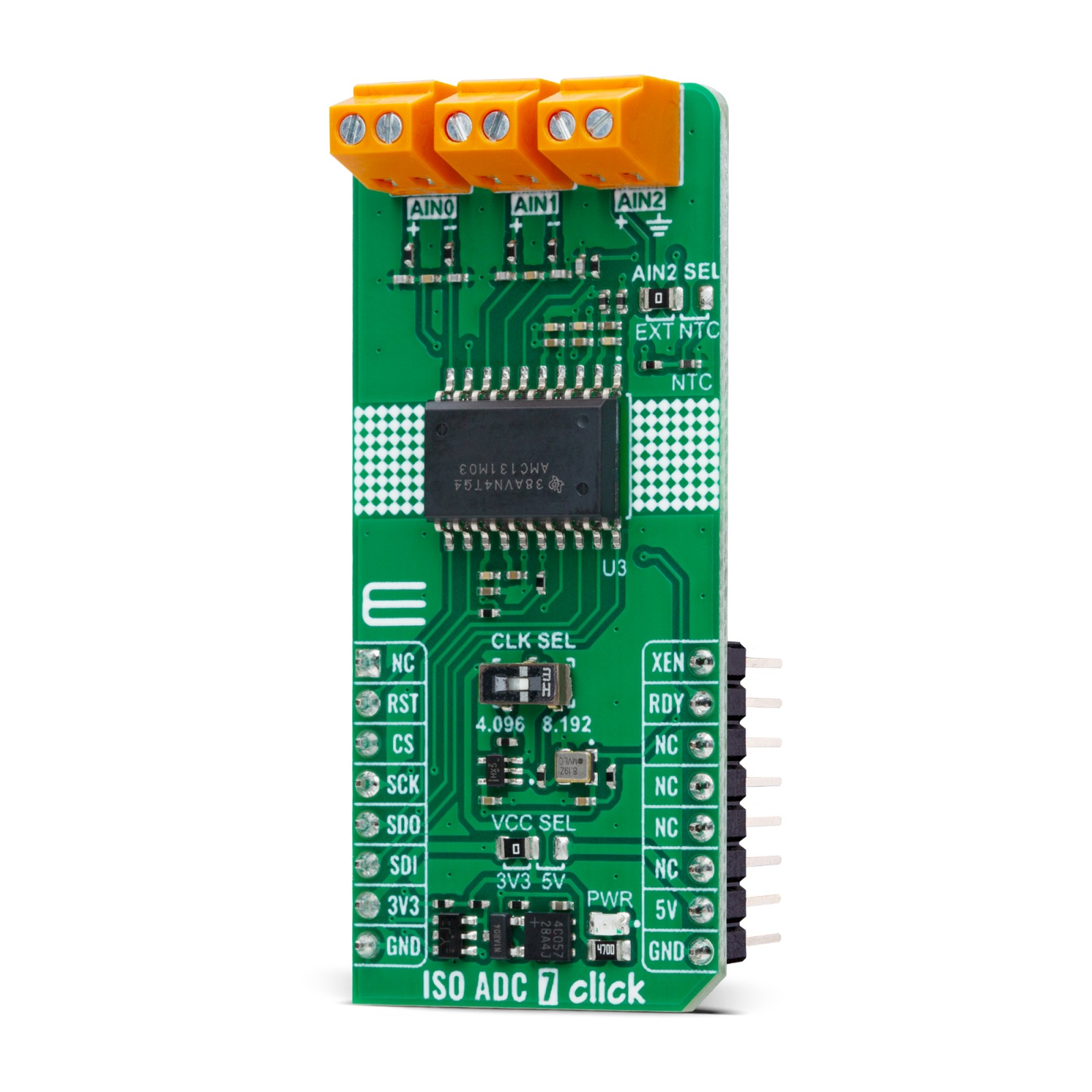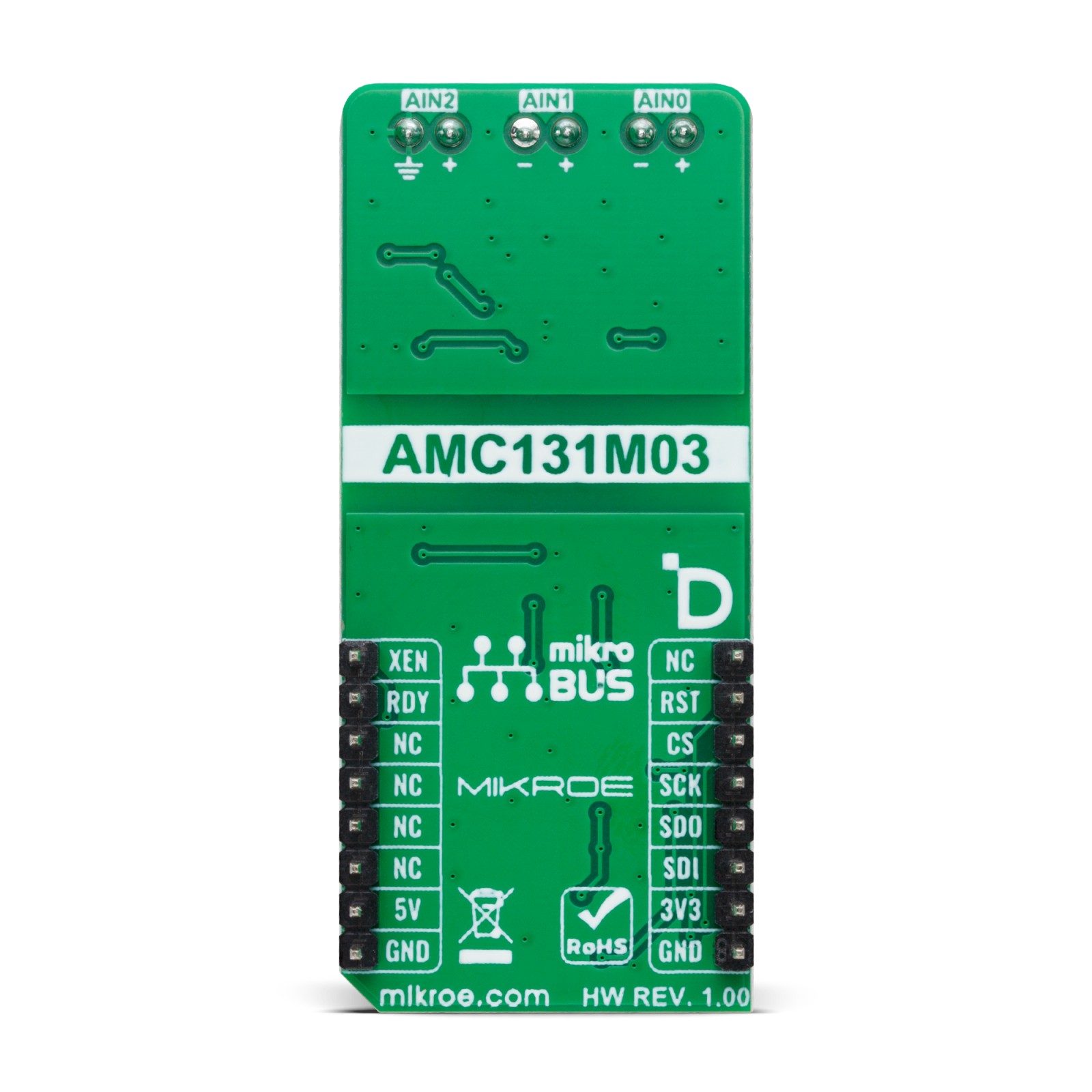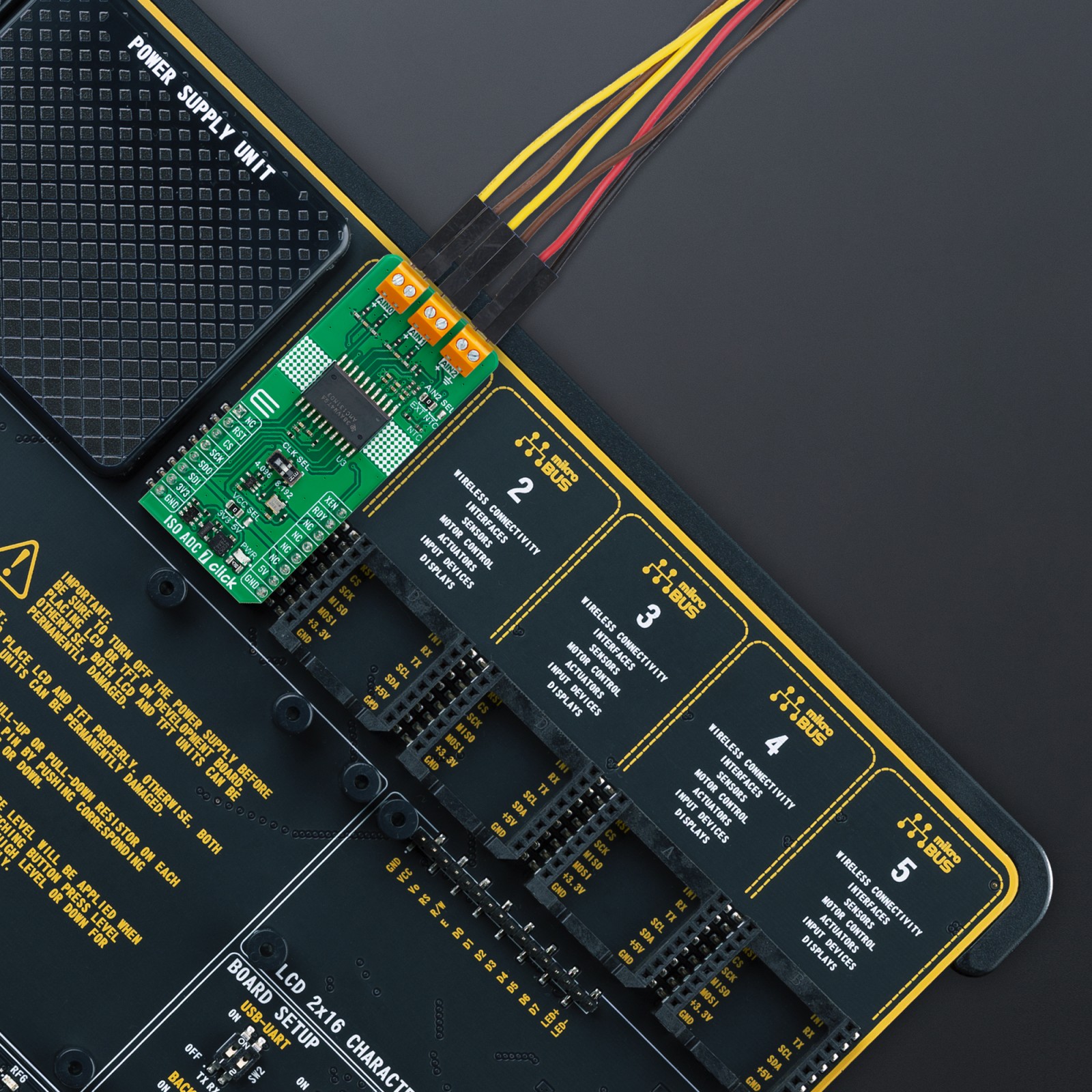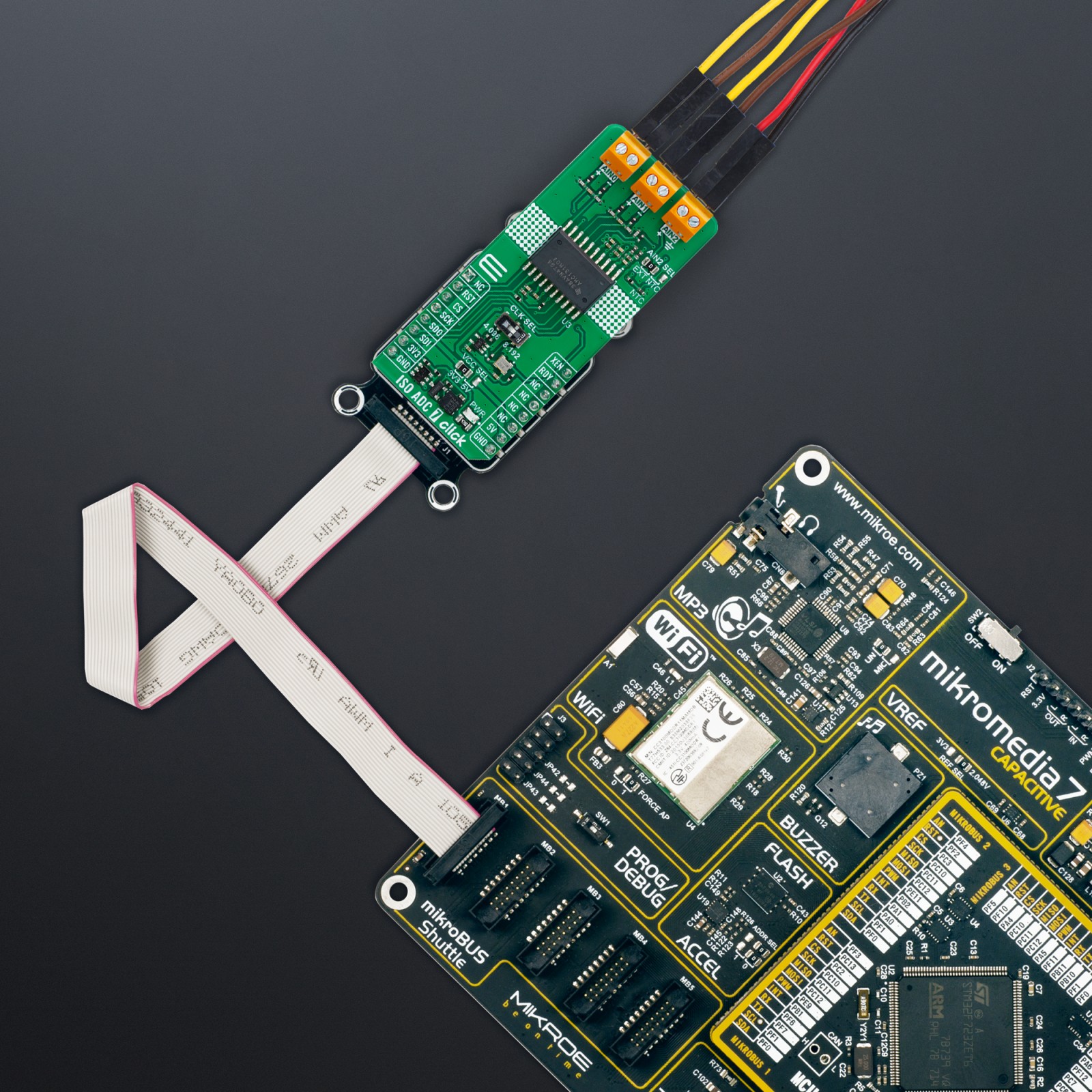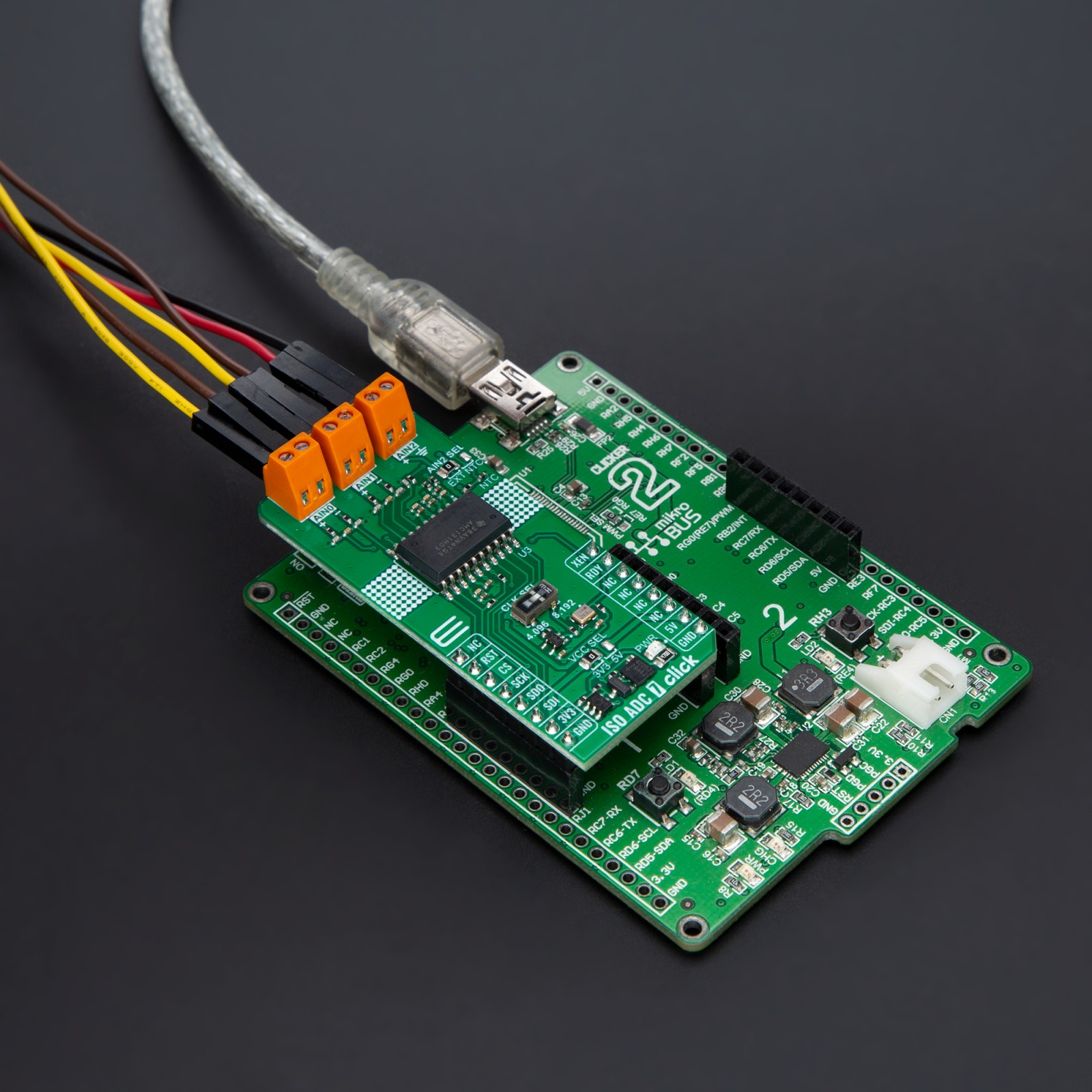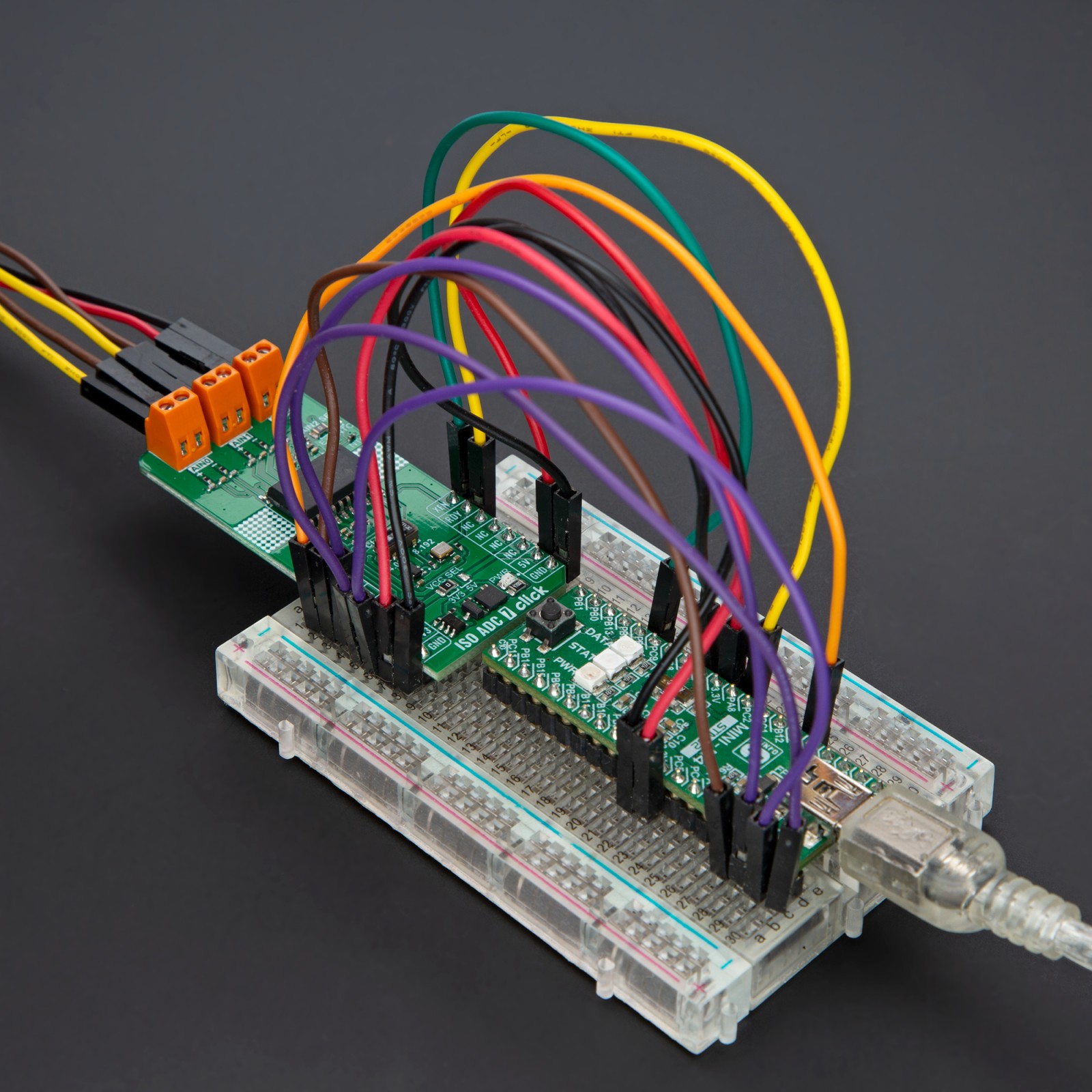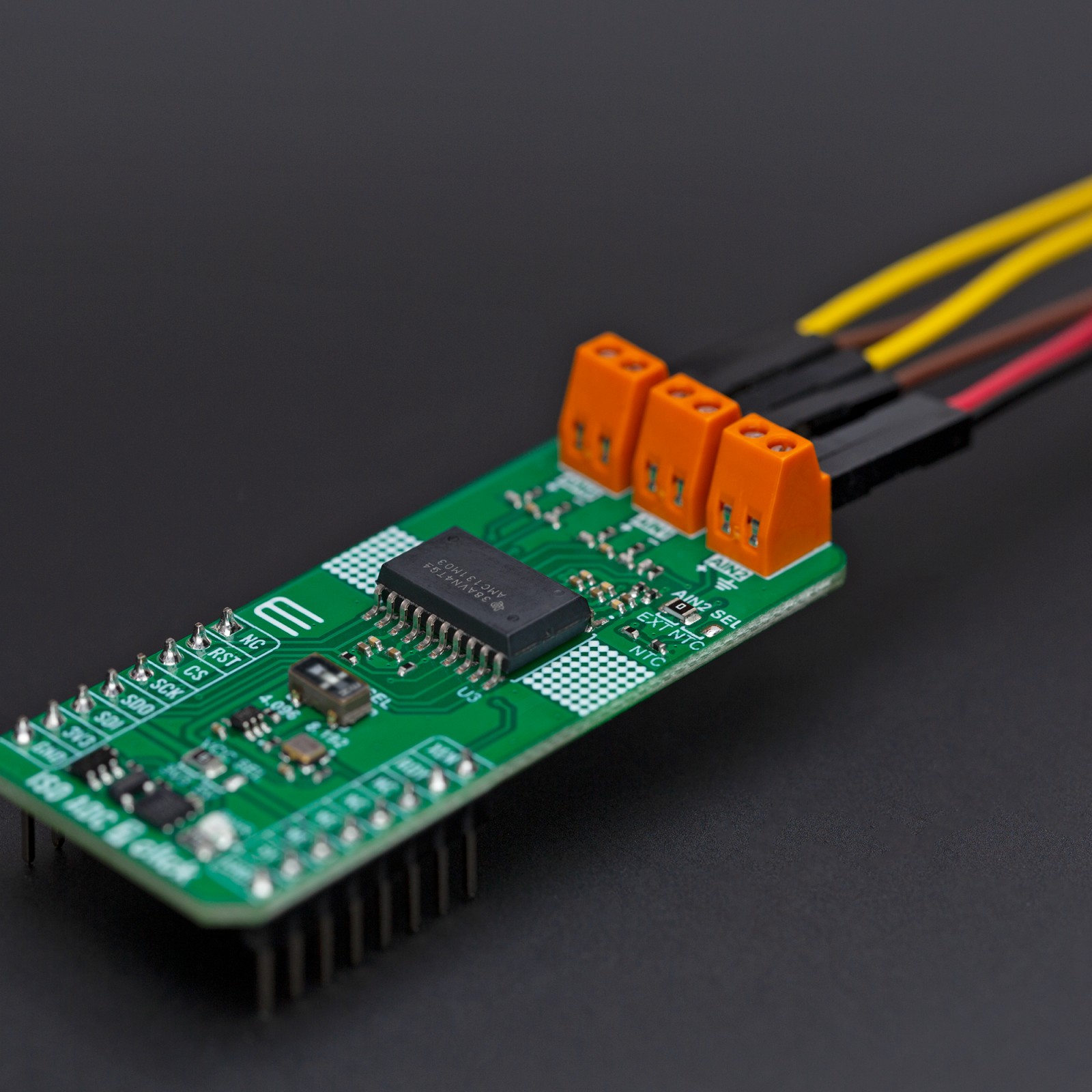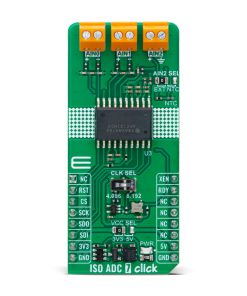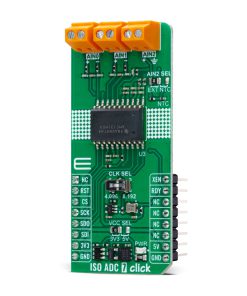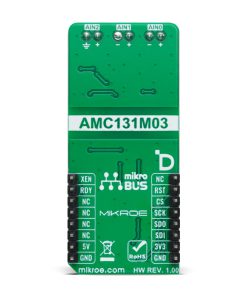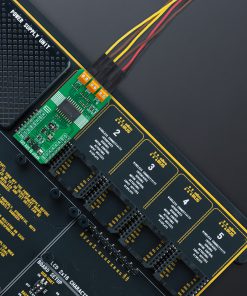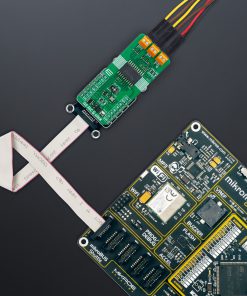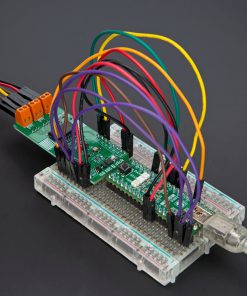Subtotal: R1,750.00
ISO ADC 7 Click
R905.00 ex. VAT
ISO ADC 7 Click is a compact add-on board designed for precise multi-channel data acquisition in various industrial applications. This board features the AMC131M03, a three-channel, 24-bit delta-sigma ADC from Texas Instruments. The AMC131M03 features a silicon-dioxide-based isolation barrier providing 5000-VRMS isolation, integrated digital decimation filters for reduced quantization noise, and a programmable gain amplifier with gains up to 128 for high-accuracy measurements. Additionally, it includes an internal temperature sensor with options for external or onboard temperature sensing. ISO ADC 7 Click is ideal for electricity meters, battery management systems, EV charging stations, and circuit breakers, where high precision and safety are crucial.
ISO ADC 7 Click is fully compatible with the mikroBUS™ socket and can be used on any host system supporting the mikroBUS™ standard. It comes with the mikroSDK open-source libraries, offering unparalleled flexibility for evaluation and customization. What sets this Click board™ apart is the groundbreaking ClickID feature, enabling your host system to seamlessly and automatically detect and identify this add-on board.
Stock: Lead-time applicable.
| 5+ | R859.75 |
| 10+ | R814.50 |
| 15+ | R769.25 |
| 20+ | R740.29 |

 tRF Click
tRF Click  Alcohol 3 Click
Alcohol 3 Click 